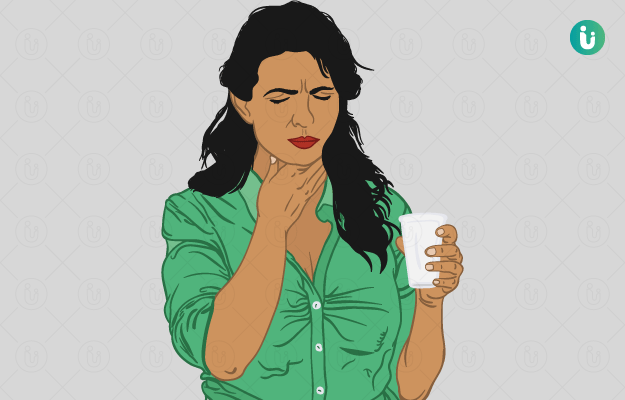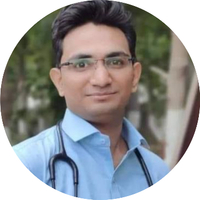Around 50 pairs of muscles work together to help you chew and swallow your food. The food that enters the mouth goes through three stages before it settles into the stomach:
- Oral phase: During the oral stage, which is the first phase, the food is chewed with the help of teeth and movement of the lower jaw. The food is moved around in the mouth with the help of the tongue. Chewing converts the food into a bolus, which is the mass of chewed food moistened by the saliva. The saliva also helps in the easy movement of the food down the throat. Only medicinal capsules and tablets are swallowed in a solid form, rest everything is converted into a bolus.
- Pharyngeal phase: The pharyngeal phase, also called the second stage, starts from the point when the tongue pushes the bolus to the back of the mouth. At this point, the body triggers a swallowing response and the food is pushed down the throat (the pharynx) to the food pipe (oesophagus). During this stage, the voice box (larynx) and the windpipe (trachea) close tightly, to prevent the food or water from entering the windpipe and lungs.
- Oesophagal phase: During the oesophagal phase, also called the third stage, the food enters the oesophagus and carries it to the stomach. This entire process takes about three seconds. This process can stretch a bit longer in the case of capsules and pills.
Dysphagia is a state where the person is unable to swallow food. A person with dysphagia can either have difficulty swallowing certain foods or cannot swallow at all. This can either occur because of a problem in the mouth and throat (oropharyngeal dysphagia) or a problem in the food pipe (oesophageal dysphagia).
Apart from difficulty swallowing, the symptoms of dysphagia include pain while swallowing, the feeling that something is stuck in the chest or throat and gagging while swallowing, among other signs.
Most of us find it difficult to swallow food or water when we have a sore throat or ulcers at the roof and back of the mouth. But that is not included under dysphagia - the pain while swallowing due to these conditions gets resolved on its own once the ulceration or throat infection subsides within a week or two. A person suffering from dysphagia has a chronic condition (long-term condition) which is more severe and requires complete medical attention.
Treatment depends on the underlying causes and may involve medicines like proton pump inhibitors and botox injections, as well as procedures like placing a stent in the food pipe. Swallowing therapy can also help some patients - especially children with dysphagia.

 Doctors for Difficulty Swallowing (Dysphagia)
Doctors for Difficulty Swallowing (Dysphagia)  OTC Medicines for Difficulty Swallowing (Dysphagia)
OTC Medicines for Difficulty Swallowing (Dysphagia)





































